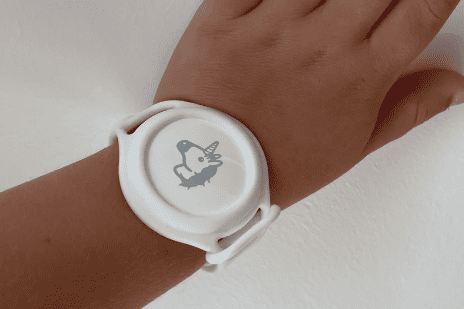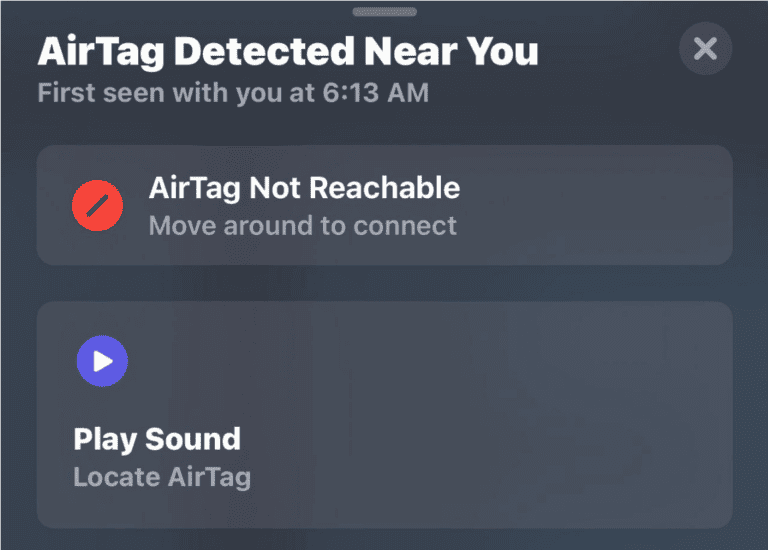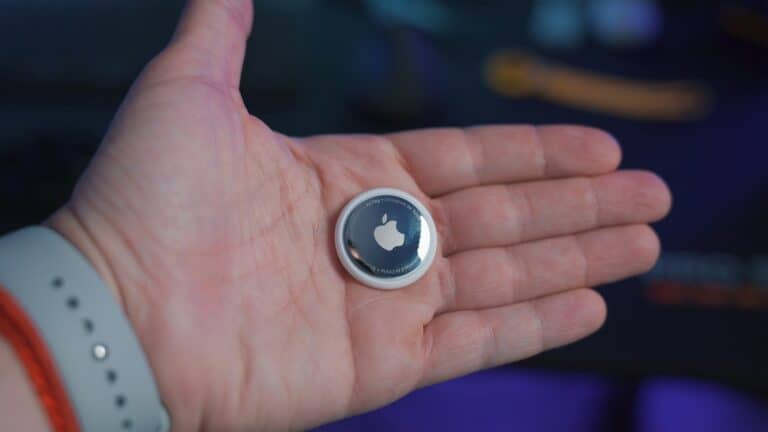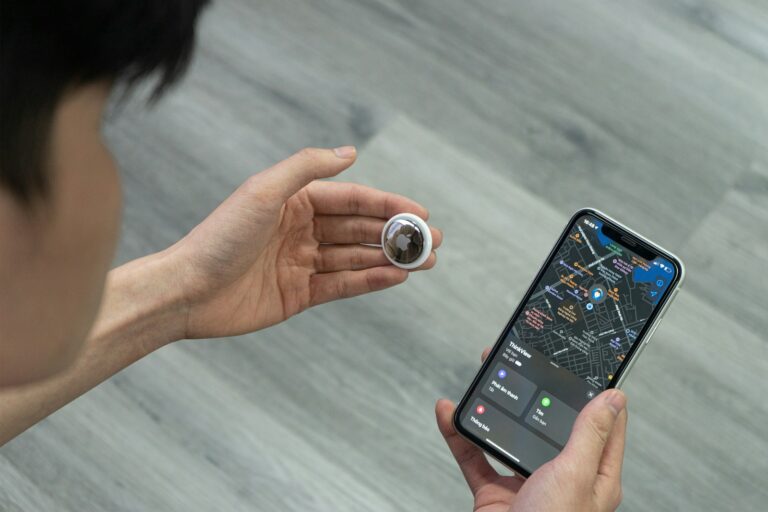Yes, you can use an Airtag to keep general track of your children (although this is against Apple’s Terms of Service) but you must realize that Airtags won’t always give you an accurate reading. Airtags don’t use GPS technology but rather nearby Bluetooth pings. That means sometimes the best you’ll get is a range in which the device is last detected, and there will be instances where updates occur periodically (not in real time). Trackers that are designed for children or pets are typically GPS-based for more accurate measurements.
Can an AirTag Be Used to Track Kids? A Parent’s Guide
Apple’s AirTag is designed to help you find lost items like keys, wallets, and bags. But many parents wonder: Can it also be used to keep track of children for safety? The answer is yes, but with important limitations and risks.
✅ Why Parents Consider AirTags for Kids
- Peace of mind: Know your child’s general location.
- Affordability: AirTags are cheaper than dedicated GPS trackers.
- Ease of use: Works with Apple’s Find My app, which many parents already use.
- Size: Small and easy to attach to a backpack, jacket, or pocket.
(Source: TravelPander)
⚠️ The Limitations of AirTags for Child Tracking
AirTags were not designed as child trackers, and that creates some drawbacks:
- No real-time GPS:
- AirTags rely on Apple’s Find My network (nearby iPhones) instead of built-in GPS.
- Location updates may be delayed, especially in areas with fewer Apple devices.
- No active monitoring:
- You can’t see your child moving in real time like you can with a GPS watch.
- Privacy alerts:
- AirTags are programmed to alert nearby iPhones if they’re “traveling with” someone.
- This is a safety feature to prevent stalking, but it means your child (or others) may get alerts about the AirTag.
- Battery life:
- About 1 year per coin cell battery, but if it dies and you don’t notice, the AirTag stops working.
(Source: Lifehacker)
⚖️ Legal & Ethical Considerations
- Parents/guardians can legally track their minor children in most places.
- However, if you’re under a court order or custody restriction, tracking may not be allowed (source: Ward Family Law).
- Always check local laws before using tracking devices.
🛡️ Safety Concerns
- Apple added child safety warning labels in 2024 (due to small parts and battery risks) (source: Apple Magazine).
- AirTags are small enough to be swallowed by young children.
- They are better suited for backpacks or clothing than being carried loosely.
👩👩👧 Alternatives to AirTags for Kids
If your goal is real-time, reliable tracking, consider purpose-built devices:
- GPS Watches for Kids (e.g., Verizon GizmoWatch, TickTalk, AngelSense).
- Child-specific GPS trackers with SOS buttons and geofencing alerts.
- These offer live tracking, two-way calling, and emergency features that AirTags lack (source: LittleBird Care).
📝 Bottom Line
- Yes, you can use an AirTag to track kids, but it’s not the safest or most reliable option.
- AirTags are best for tracking belongings (like backpacks) rather than children themselves.
- For true peace of mind, a dedicated child GPS tracker or smartwatch is a far better choice.
Alternatives to Consider for Tracking Kids
While AirTags might offer a sense of convenience, they are not specifically designed for tracking children. Let’s consider alternatives and important factors surrounding child safety and digital privacy.
Dedicated GPS Trackers for Kids
Several products on the market are designed specifically for tracking children. These GPS trackers often come in the form of:
- Watches: Kid-friendly smartwatches with GPS tracking and often additional features like two-way calling or SOS buttons for emergencies.
- Wearable Pendants: Smaller, discrete devices that can be attached to backpacks or clothing.
These dedicated trackers are typically more robust than AirTags for this purpose, providing features like:
| Feature | Description |
|---|---|
| Real-time location updates | Frequent updates on a child’s location |
| Geofencing | Setting up virtual boundaries, receiving alerts when the child leaves or enters specific areas |
| SOS buttons | Allows a child to send an alert to parents or guardians in an emergency |
Apple Watch with Family Setup
For Families in the Apple Ecosystem
If you’re fully in the Apple ecosystem, an Apple Watch with Family Setup is a strong solution. This allows you to manage an Apple Watch for your child, even if they don’t have their own iPhone. You can track their location, set communication limits, and approve apps and contacts.
Open Communication and Education
Essential Alongside Any Tracking Technology
Regardless of the tracking technology you might choose, open communication and education about safety are paramount:
- Discuss with your child: Explain the reason behind tracking and get their understanding and input.
- Teach safety practices: Instruct your child on how to stay safe, recognize potential dangers, and ask for help from trusted adults when needed.
It’s important to remember that tracking technology should be a tool to supplement your child’s safety, not a replacement for open communication and guidance.
Key Takeaways
- AirTags are designed for locating items, not people.
- Privacy and ethics should be considered when tracking kids.
- AirTags do not offer real-time GPS tracking.
Understanding Airtags and Their Capabilities
Apple’s AirTags are designed to help you keep track of your belongings. They use advanced technology to provide precise location information with a focus on user privacy.
Technology Behind Apple Airtags
Apple AirTags use Bluetooth to connect to nearby devices in the Find My network. They also have Ultra Wideband technology for more precise location with compatible devices. This network extends globally thanks to the millions of iPhone devices that detect and report the location of nearby AirTags.
Setting Up and Using Airtags
To start using an AirTag, pair it with your iPhone or iPad by bringing it close to your device. After setup, attach your AirTag to any item, and the Find My app will show its last known location on a map.
Safety, Security, and Privacy Considerations
AirTags have safety features to prevent unwanted tracking. Your iPhone will alert you if an unknown AirTag moves with you. AirTags also play a sound after being separated from their owner for a period. This is a security measure to help detect unintended tracking.
Airtag’s Compatibility and Limitations
AirTags are designed for use with Apple devices and the Find My app. They work best with iOS devices but have limited functionality with Android. AirTags do not offer GPS tracking; instead, they depend on the Bluetooth range and the Find My network.
Battery and Maintenance
Each AirTag uses a CR2032 battery that typically lasts for over a year. The user can easily replace the battery. Regular maintenance isn’t needed, just occasional battery checks or replacements.
Alternative Tracking Solutions
While AirTags offer a convenient solution for Apple users, there are alternatives like Tile for those wanting a more platform-agnostic device. Other dedicated GPS trackers offer a different set of features, typically including a wider range but often at greater cost and with a need for charging.
Apple AirTags provide a practical way to track items, combining technology and ease of use. They incorporate a focus on security and privacy to minimize risks associated with tracking.
Practical Applications and Concerns for Parents
Parents are increasingly turning to technology like Apple’s AirTag for keeping an eye on their children. This section examines how these devices are used for safety, the ethical questions they raise, the risks involved, and insights from experts on their future.
Tracking Children for Safety and Peace of Mind
Families use Apple AirTags to track their kids, seeking security and peace of mind. For instance, an AirTag in a child’s backpack helps parents see their location in real-time using GPS. This can be reassuring if a child is on a trip or walking to school.
Ethical and Legal Implications
The use of tracking devices like AirTags with kids raises ethical questions. Consent and privacy are key. Parents must consider a child’s right to privacy and discuss the use of these devices openly with them. Age plays a role too; what’s suitable for a teen might not be for a younger child.
Addressing the Risks of Digital Stalking
While AirTags offer protection, they can also pose a risk if misused. Apple has safeguards to alert someone if an unknown AirTag is with them, reducing the risk of unwanted tracking. Parents should be aware of this and ensure their kids know what to do if they receive such an alert.
Real-life Scenarios and Expert Advice
Experts often weigh in on the use of tracking technology. They suggest setting boundaries and keeping open conversations about trust and technology use. Some point out that these devices might give a false sense of security and are not a replacement for teaching kids to be aware of their surroundings.
The Future of Child Tracking Technology
With iOS 17 and new devices like the Apple Watch, child tracking tech is advancing. In the next decades, we might see more integrated systems that provide more accurate tracking and allow kids more freedom, while also educating them on personal responsibility and safety.
Frequently Asked Questions
This section covers common inquiries about using Apple’s AirTag to track children.
Is it permissible to use an AirTag to monitor the location of my child?
It is legal for parents to track their children with AirTags for safety. However, it should be done in a way that respects their privacy and trust.
What are the best ways to secure an AirTag to a child’s belongings?
Parents can attach an AirTag to a child’s backpack or coat. Choose secure spots where it won’t fall off or be easily removed.
Can AirTags be used as a safety measure to prevent kidnapping?
AirTags can add a layer of security by helping parents locate a child’s belongings. Still, they are not a foolproof method against kidnapping and should be part of broader safety measures.
What is the effective range of an AirTag when tracking items?
AirTags use Bluetooth, which usually works within 100 meters of the user’s device. They also employ Apple’s Find My network for wider coverage.
How do AirTags function, and are they similar to traditional GPS trackers?
AirTags are not GPS devices. They use Bluetooth and the Find My network to mark an item’s last known location near Apple devices.
Are AirTags designed to be water-resistant for use with kids’ activities?
AirTags are water-resistant. They can withstand splashes and accidental spills, which makes them suitable for children’s daily use.







